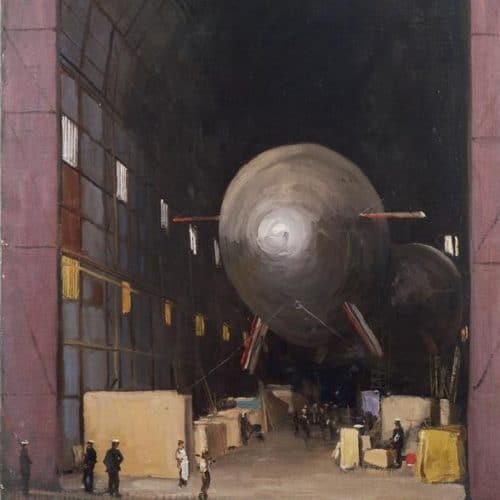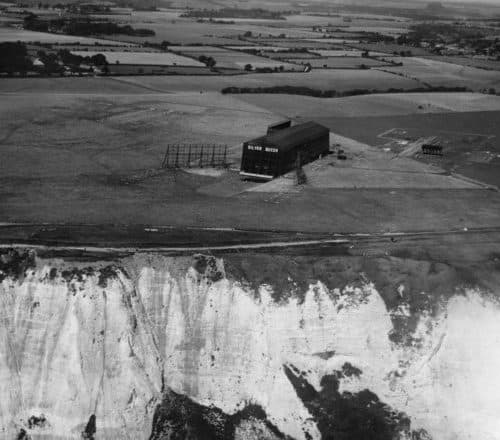WW1 16: Zeppelins and airships - MISSING photos
Caught in the searchlights over London on this WW1 army recruitment poster is a German Zeppelin airship.
Zeppelins were huge airships, filled with hydrogen, which is lighter than air, making the airships float in air. They could travel long distances and drop a lethal cargo of bombs.
Zeppelins flew over the Folkestone area a couple of times, causing panic and excitement on the ground.
On 13 October 1915, five Zeppelins returning from a raid on London dropped bombs on army camps. The camps were at Otterpool near Lympne, and at Westernhanger, where Canadian troops were staying before embarkation for France.
Fifteen men were killed and 21 injured in the raid.
Then on the night of 24 August 1916 a Zeppelin (L32) was spotted directly over Folkestone. The Reverend Carlile, who was among large crowds of people watching from the ground takes up the story…
It approached the town from the direction of Sandgate and floated on the breeze immediately down the Leas. When over the harbour, it hung well up in the darkness as though poised for dropping its cargo of bombs. However, suddenly the searchlight from the top of Dover Hill, shot its beam of light upon it, illuminating it from stem to stern. Immediately, the guns crashed out, and the Zeppelin rose higher and higher, speedily making off towards the French coast, dropping its bombs with resounding crashes into the sea. The guns from Dover and from ships in the Channel took part in the fight, and a thrilling sight was presented to those who went onto the Leas, as the huge airship ran the gauntlet of the searchlights and bursting shells.
[photo of F5235 Zeppelin wire relic]
This small piece of wire is a souvenir from a crashed German airship.
It’s part of SL-11, a German Schutte-Lanz airship shot down at Cuffley, Hertfordshire on the night of 3 September 1916, less than 2 weeks after the Folkestone Zeppelin raid.
This airship was the first to be shot down on British soil.
The pilot who shot it down was 2nd Lieutenant William Leefe Robinson, of the Royal Flying Corps, whose biplane used a new kind of incendiary ammunition, an exploding bullet that set the hydrogen in the airship on fire. Robinson won the Victoria Cross for his actions.
[photo of F5054 Propeller blade from Silver Queen airship]
This large wooden propeller blade isn’t from a plane. It’s from a British airship called the Silver Queen which was based at the Royal Naval Air Station at Capel Le Ferne, on the cliffs just outside Folkestone during World War 1.
Silver Queen had 2 huge propellers (much taller than an adult). These were rotated at high speed by a large engine and powered the airship along.
This blade from one of Silver Queen’s propellers was recovered and kept as a souvenir by Mr H H Pearce, who worked at the base as a carpenter in World War 1. Later, his son donated it to Folkestone Museum.
Photo of Silver Queen? Mentioned in text
Here’s a photo of Silver Queen. Look closely and you can see the propellers attached beneath the airship
It was used to look for German U-boats (which were sinking British ships in the English Channel) and to escort vessels to France.
One of the many Folkestone men recruited to work at the base, recalls Silver Queen’s sad demise:
Just before I arrived there, one of the earliest blimps (airships) known as ‘Silver Queen’ went up in flames after hitting some overhead wires.
New improved airships called ‘Sea Scouts’ were developed to replace these early designs.
[Copyright: Imperial War Museum]
This oil painting shows the Silver Queen in its hanger at RNAS Wormwood Scrubs in 1915, before it came to Capel.
[Copyright: Historic England]
A giant hanger was built for it on the cliffs at Capel Le Ferne. It can be seen in this photograph of the former Royal Naval Air Station site, taken in 1927.



